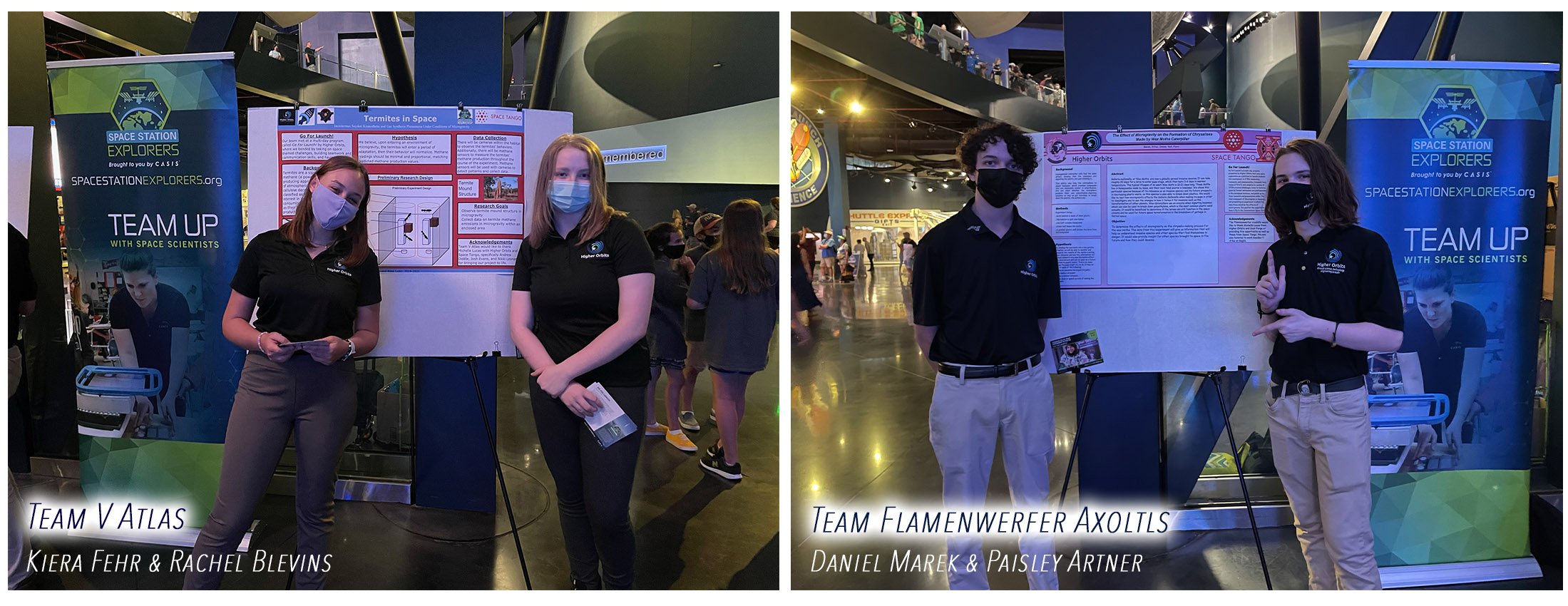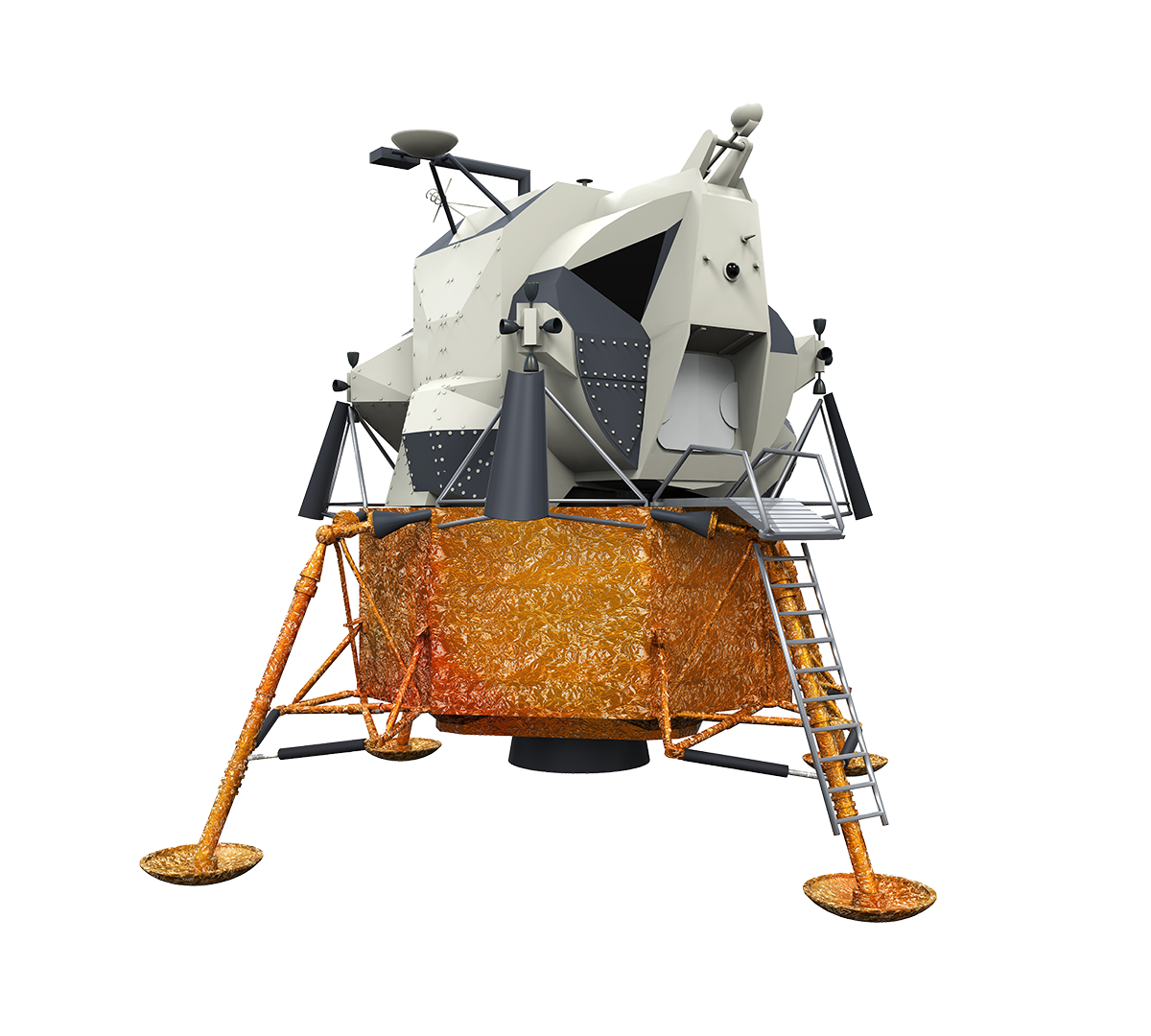June 3rd at 1:28:50PM Kiera Fehr, Rachel Blevins, Paisley Artner, and Daniel Marek anxiously counted down along with the large crowd of Kennedy Space Center visitors. After the loud shout of “one” echoed from the crowd, a second or two of silence passed and everyone’s eyes searched the sky for the SpaceX Falcon 9. Suddenly, a blaze of light erupted from the far-off launch pad and the crowd along with our first-time student space scientists cheered with excitement.
The eyes of team V Atlas and team Flamenwerfer Axoltls lit up as brightly as the Falcon 9 engine fire crossing the sky. The rocket while impressive, was not the only reason these stellar students watched on in awe. The Falcon 9 would soon bring up the Dragon to the International Space Station which held BUG-02, the hardware that housed both teams’ winning Go for Launch! experiments.
And yes, the Space Tango created payload lived up to the name as it held around 75 cosmic critters.
Both teams shared the spotlight as their bug-centric experiments launched into space aboard the Dragon cargo ship and arrived at the International Space Station on June 5th at 5:09AM EDT.
Currently on the ISS there are around 50 termites enjoying their side of the BUG-02 payload. The 2019 Series winners, Team V Atlas, consists of Kiera Fehr, Rachel Blevins, Dresden Lubic, Riley Lubic, and Rosalie Huff. They want to evaluate the effects of microgravity on the southeastern drywood termite’s methane production rates.
“The results of our experiment matter because termites actually produce approximately 11% of the worlds methane annually, which is extremely important because methane is a greenhouse gas, and a large contributor to climate change,” stated Fehr. “We’re hoping that the readings from space of the termite’s methane production can be compared to readings on Earth and can maybe give us insight into if there are any different digestive properties happening with the termites gut protozoa when they are in microgravity.”
Fehr also mentioned that regardless of if the rate is higher or lower in microgravity, the data results could still indicate the usefulness of termites in space. She said it was possible that termites could be used as a by-product for fuel, or the data could be an indicator of the insect’s importance when humans do begin colonizing space.
The other side of BUG-02 holds 25 wax moths for team Flamenwerfer Axoltls and their experiment focuses on the ability of the moth to a form a chrysalis in microgravity.
“We are trying to see if their chrysalis can be formed and if it can be, if they will even metamorphosize at all,” stated Artner.
The Go for Launch! AIAA Apollo Series winners, Team Flamenwefer Axoltls also believes their experiments data could lead to potential findings in the future of space colonization.
“The results would help a lot when possibly colonizing or terraforming Mars as these moths are known to break down any plastic. So, it would be good to get rid of those plastics up there,” noted Marek.
Fellow teammates Trinity Nett, Grace Flynn and Jake Drews were not present at the launch but played a huge roll in their experiment.
Both experiments will remain in space for at least 30 days where data will be downlinked throughout its time on board.
After experiencing the launch firsthand, the team representatives spent the remainder of their day at KSC enjoying the visitor center and presenting their out-of-this world projects.
Blevins, Fehr, Artner and Marek all reflected on their incredible accomplishment. A few common takeaways were stated among the two teams. The students noted how their Go for Launch! experience truly allowed them to share their passion for space with others. Not to mention the pride and enjoyment the students took in working together as a team.
At the end of the day, nothing beats the feeling of just having your work in space.
“I thought it was amazing that whenever I did this back in June 2019, I was an eighth grader. So, for a 13-year-old to be able to do something this incredible, send something up to space, and be a part of an idea that someone can work on and send to the International Space Station,” said Blevins.
Experiencing the SpaceX CRS 22 launch was an exciting moment for the surrounding crowd of Kennedy Space Center visitors. Unbeknownst to the crowd, there were four students feeling 10 times the excitement, as they saw a piece of them fly into the stars.


